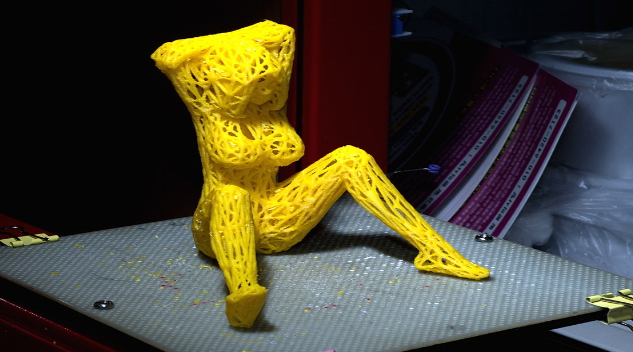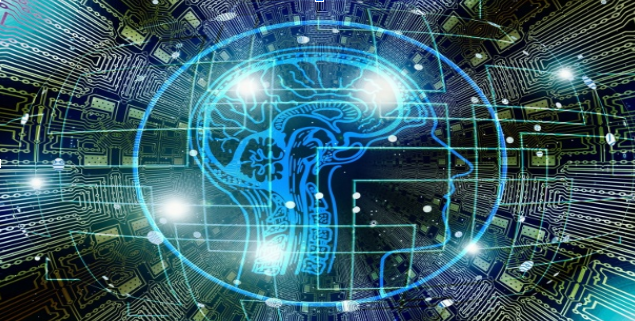
The realm of art has long been a canvas for technological evolution, and the emergence of 3D printing in this sphere marks a revolutionary chapter. This synthesis of art and technology took a quantum leap with the integration of Artificial Intelligence (AI), redefining the boundaries of creativity. In this comprehensive exploration, we delve into the intricate dance of AI and 3D printed sculpture, a symphony of digital precision and artistic flair. As we embark on this journey, we trace the historical context and current trends, illustrating how this synergy is not just a fleeting trend but a cornerstone in the future of art.
Table of Contents
Toggle- What is 3D Printed Sculpture?
- How Does AI Contribute to 3D Printed Sculpture?
- What Technologies are Pioneering AI in 3D Sculpture Printing?
- The Creative Process: From Concept to Reality
- What are the Advantages of Using AI in 3D Printed Sculpture?
- Challenges and Limitations of AI in 3D Printed Sculpture
- Case Studies: Successful AI-Integrated Sculptures
- Future of AI in 3D Printed Sculpture
- Conclusion
What is 3D Printed Sculpture?
3D printed sculpture is an innovative artistic expression that harnesses the power of additive manufacturing. Through this technique, artists create intricate sculptures layer by layer, using various materials like resin, plastic, or metal. These creations range from abstract forms to hyper-realistic figures, each echoing the unique vision of its creator. The flexibility in materials and techniques has opened new horizons, with examples spanning from small, intricate pieces to monumental installations.
Evolution of 3D Printed Sculpture
The journey of 3D-printed sculpture is a tapestry of technological advancements and artistic exploration. It began with simple, experimental structures and has evolved into complex, dynamic forms. Key artists in this field have pushed boundaries, experimenting with scale, texture, and form. These pioneers have not only contributed to the art form’s evolution but have also inspired a new generation of artists to explore the limitless possibilities of 3D printing in sculpture.
How Does AI Contribute to 3D Printed Sculpture?
AI’s role in 3D printed sculpture is multifaceted, influencing every stage from conceptualization to execution. It acts as a collaborator, offering artists new tools to realize their visions. The application of AI in this field is not just a technical enhancement but a paradigm shift, enabling a fusion of human creativity with algorithmic precision.
AI in Design and Conceptualization
In the realm of design and conceptualization, AI algorithms serve as a modern muse. Generative art, powered by AI, enables artists to explore an array of design variations, often leading to unexpected and captivating results. These algorithms can analyze and learn from existing art forms, providing artists with unique suggestions that combine historical art elements with contemporary design.
AI in Material Selection and Optimization
AI’s involvement extends to material selection and optimization, ensuring that the chosen medium best reflects the artist’s vision.

Through AI, artists can analyze various materials’ properties, such as durability, texture, and color, to select the perfect medium for their sculpture. This process not only enhances the aesthetic appeal but also ensures the structural integrity of the artwork.
AI in the Printing Process
In the actual printing process, AI enhances precision and efficiency. It plays a critical role in optimizing print parameters, reducing errors, and ensuring that the final product faithfully represents the original design. This level of accuracy is pivotal in transforming a digital concept into a tangible piece of art.
What Technologies are Pioneering AI in 3D Sculpture Printing?
The integration of AI in 3D sculpture printing is propelled by a range of innovative technologies. This includes advanced software for design and simulation and innovative 3D printers enhanced with AI capabilities. These technologies are not just tools but collaborators, enabling artists to push the boundaries of what is possible in sculpture.
Advanced Software for Design and Simulation
Software equipped with AI capabilities has become an indispensable tool in the artist’s digital workshop. These programs offer powerful simulation capabilities, allowing artists to visualize and tweak their designs in a virtual environment before the actual printing process begins. This not only saves time and resources but also opens up new possibilities in design experimentation.
Innovative 3D Printers Using AI
The latest professional and industrial 3D printers, integrated with AI, are redefining the standards of sculpture printing. These machines are capable of handling complex designs with ease, offering higher precision and greater flexibility in material usage. They represent a significant leap from traditional 3D printers, embodying the convergence of art and intelligent technology.
The Creative Process: From Concept to Reality
The process of creating a 3D-printed sculpture with AI assistance is both an art and a science. It begins with the conceptualization phase, where AI algorithms offer design suggestions and variations. Following this, material selection is optimized through AI analysis, ensuring the best fit for the intended aesthetic and structural needs. The actual printing process is then meticulously managed by AI, optimizing every layer for precision. This harmonious collaboration between artist and technology culminates in a unique and captivating sculpture.
What are the Advantages of Using AI in 3D Printed Sculpture?
The advantages of 3D printing and AI integration bring myriad benefits, revolutionizing both the artistic and technical aspects of sculpture creation. This includes enhanced precision, efficiency, and expanded creative possibilities. The bullet list below details these benefits:
Precision and Accuracy: AI algorithms ensure that every detail of the artist’s design is accurately translated into the physical sculpture.
Efficiency in Production: AI-optimized printing processes reduce material waste and production time.
Expanding Creative Horizons: AI opens up new realms of artistic expression, enabling artists to explore designs that would be impossible to achieve manually.
Customization and Personalization: AI allows for easy modification and customization of designs, catering to specific artistic visions or client requests.
Material Innovation: With AI, artists can experiment with a wider range of materials, combining them in novel ways to create unique textures and effects.
Enhancing Creativity and Design Possibilities
AI in 3D printed sculpture is not just a technical aid; it represents a new era in artistic expression. It enables artists to transcend traditional limitations, exploring uncharted territories of form, texture, and scale. The use of AI in design and conceptualization has led to the creation of sculptures that challenge our perceptions of art and technology, blurring the lines between the digital and physical worlds.
Improving Efficiency and Precision
The technical prowess of AI in 3D printing cannot be overstated. Its ability to enhance efficiency and precision has significant implications, not just in the quality of the sculptures produced but also in the sustainability of the production process.

By optimizing material usage and reducing waste, AI contributes to a more environmentally responsible approach to sculpture creation.
Challenges and Limitations of AI in 3D Printed Sculpture
Despite its transformative impact, the integration of AI in 3D printed sculpture is not without challenges and limitations. These range from technical hurdles to ethical and artistic considerations, each requiring careful deliberation and innovative solutions.
Technical Challenges and Solutions
The technical challenges in this field are diverse, including issues related to software limitations, material compatibility, and the scalability of designs. However, the art and tech community is continuously working to address these challenges, with ongoing research and development leading to significant advancements. Emerging technologies and collaborative efforts are paving the way for overcoming these obstacles, pushing the boundaries of what can be achieved with AI and 3D printing in sculpture.
Ethical Considerations in AI-Generated Art
The use of AI in art raises important ethical questions. It challenges traditional notions of authorship and creativity, prompting a reevaluation of what constitutes “art” and the role of the artist in the digital age. These considerations are not just academic; they have practical implications for copyright, ownership, and the valuation of art. The perspectives of artists, ethicists, and the public play a crucial role in shaping the discourse around these issues.
Case Studies: Successful AI-Integrated Sculptures
To contextualize the impact of AI in 3D printed sculpture, we present case studies of successful integrations. These examples showcase the diverse applications of AI in this field, from large-scale public installations to intricate, personalized pieces. Each case study provides insight into the creative process, the technical challenges overcome, and the artistic vision realized through the collaboration of AI and human creativity.
Future of AI in 3D Printed Sculpture
The future of AI in 3D printed sculpture is a canvas of limitless potential. Emerging technologies, such as advanced neural networks and new printing materials, are set to further revolutionize this field.

The potential for AI to not just assist but collaborate with artists in creating sculptures that reflect the complexities of human emotion and experience is immense. This future promises a fusion of art and technology, where the only limit is the imagination.
Conclusion
In conclusion, the role of AI in 3D-printed sculpture is a testament to the ever-evolving relationship between technology and art. This integration not only enhances the technical aspects of sculpture creation but also opens new avenues for artistic expression. As we reflect on this intersection, it is evident that the significance of AI in 3D-printed sculpture lies in its ability to expand the horizons of what is possible, both in the realm of art and beyond.






